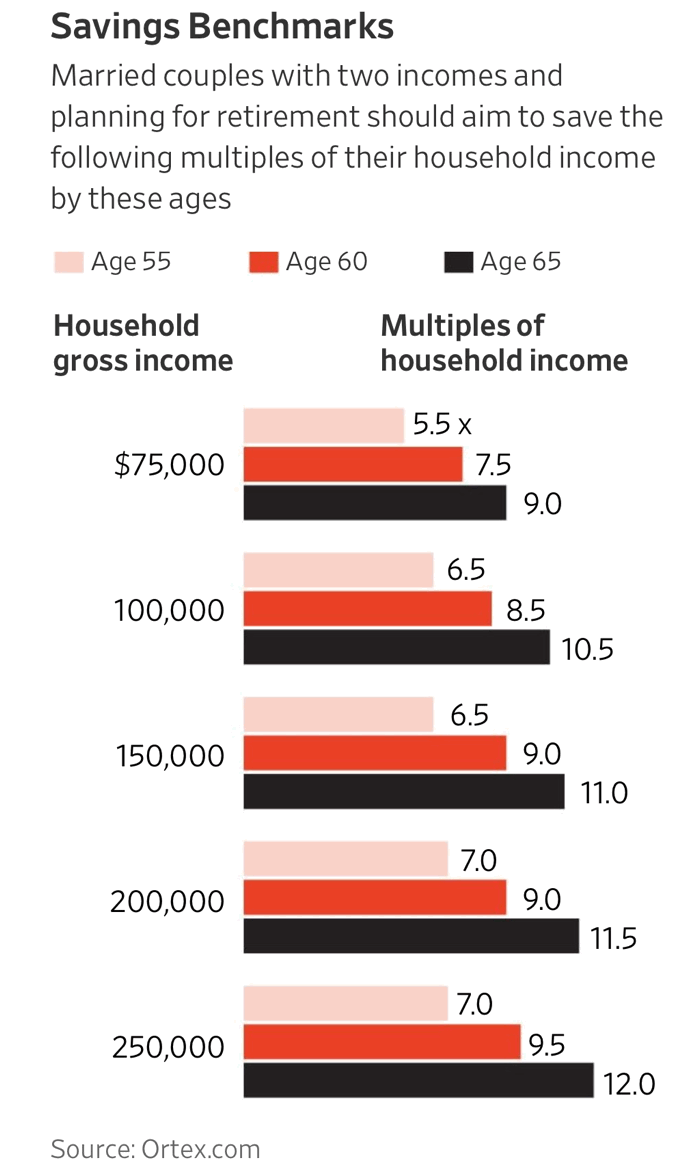 The WSJ article tries to answer what is likely a very common question:
The WSJ article tries to answer what is likely a very common question:
My wife and I are in our early 50s. We hope to retire in about a dozen years, and we are trying to figure out if our nest egg is on track. How large should our savings be at our age?
Obviously, everyone’s situation is different, but the WSJ appears to have collected the rules of thumb from a few big financial firms – including , , and – and averaged them into this chart:

The chart indicates that a couple with a gross household income of $75,000 should target a nest egg of $412,500 at age 55, with that number increasing to $675,000 by age 65. The multiples get bigger with a higher income, I am assuming due to the resulting higher tax rates. It is also unclear if these numbers make any assumptions about Social Security income, but it seems like it does as the numbers appear too low otherwise.
Using gross income ignores your actual expenses, but I acknowledge that this is a rough “rule of thumb” and many more people know their gross income than their annual expenses. (An alternative rule of thumb is the “4% rule”, which says that you should expect to be able to safely withdraw roughly 4% of your balanced stock/bond portfolio per year (for 30 years) without running out of money. This equates to a rule of saving 25 times the income you want produced. You may already have other income sources. Need $30,000 of annual income above Social Security and a small pension? Then 25 times $30,000 = $750,000 at retirement age.)
Perhaps just as importantly, the target moving from 5.5X to 9X income after only 10 years definitely shows (and relies upon) the power of late-stage compounding when a nest egg is already growing. If you manage to get to 5.5X at age 55, your portfolio returns may already be significantly greater than your additional savings in any given year. You have momentum on your side.
This brings me back to my overall reaction to these types of charts. If you are starting with a modest amount, these are huge, scary numbers. They can be so big, you think, why even bother trying? For most people, the key to retirement savings is setting up a system of regular savings and investment, and then letting it run with minimum interruption for 20, 30, 40 years. Focus on setting up the auto-save. Once you get to 1X income, and all the rest will suddenly seem possible.
“The editorial content here is not provided by any of the companies mentioned, and has not been reviewed, approved or otherwise endorsed by any of these entities. Opinions expressed here are the author’s alone. This email may contain links through which we are compensated when you click on or are approved for offers.”
from .
Copyright © 2004-2021 MyMoneyBlog.com. All Rights Reserved. Do not re-syndicate without permission.